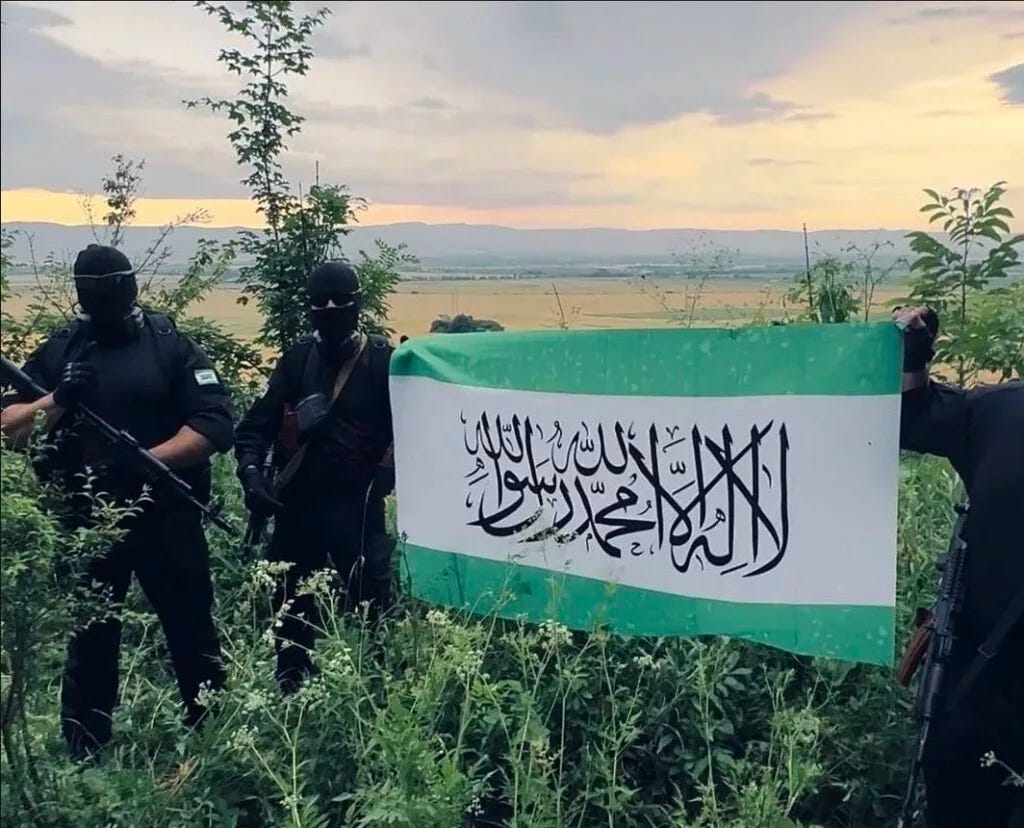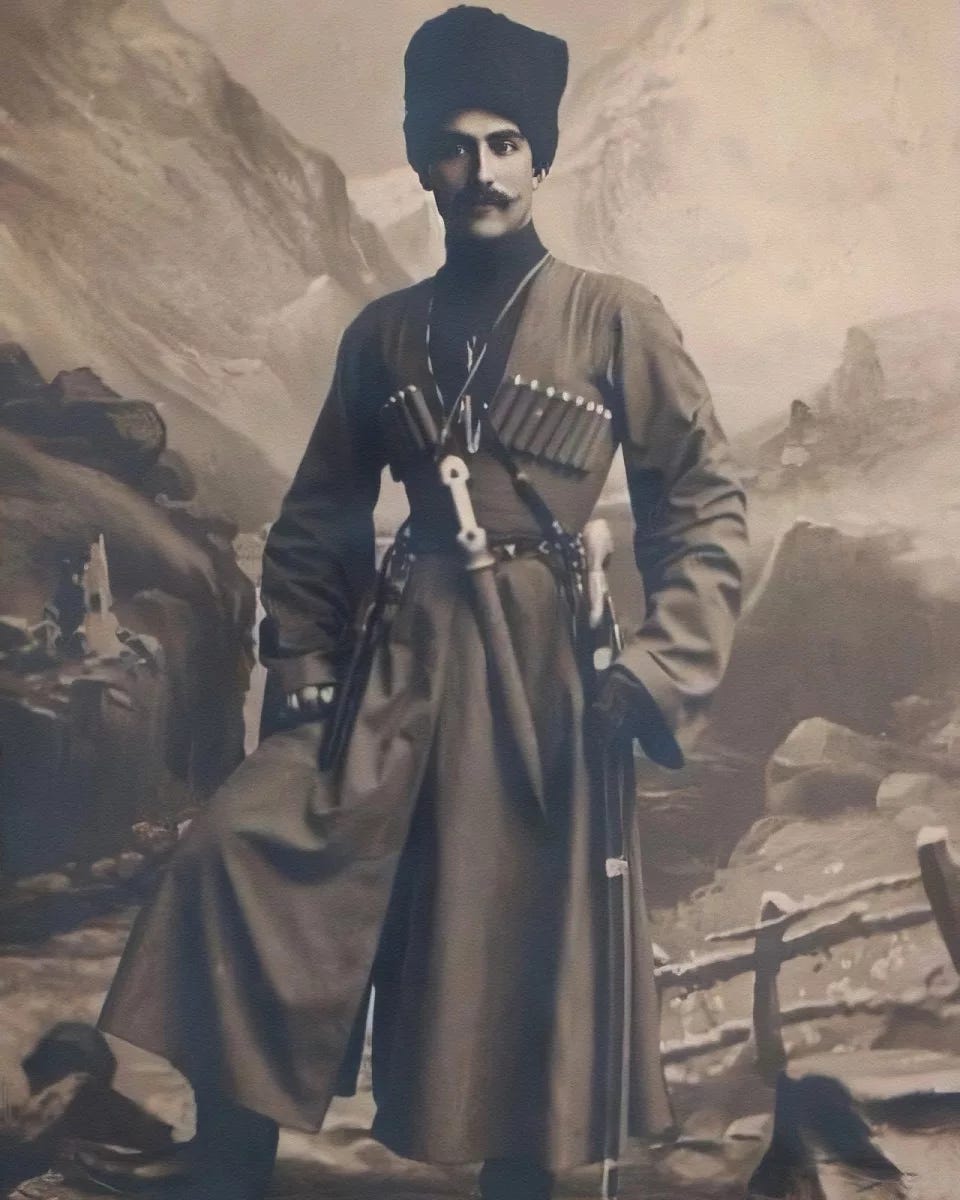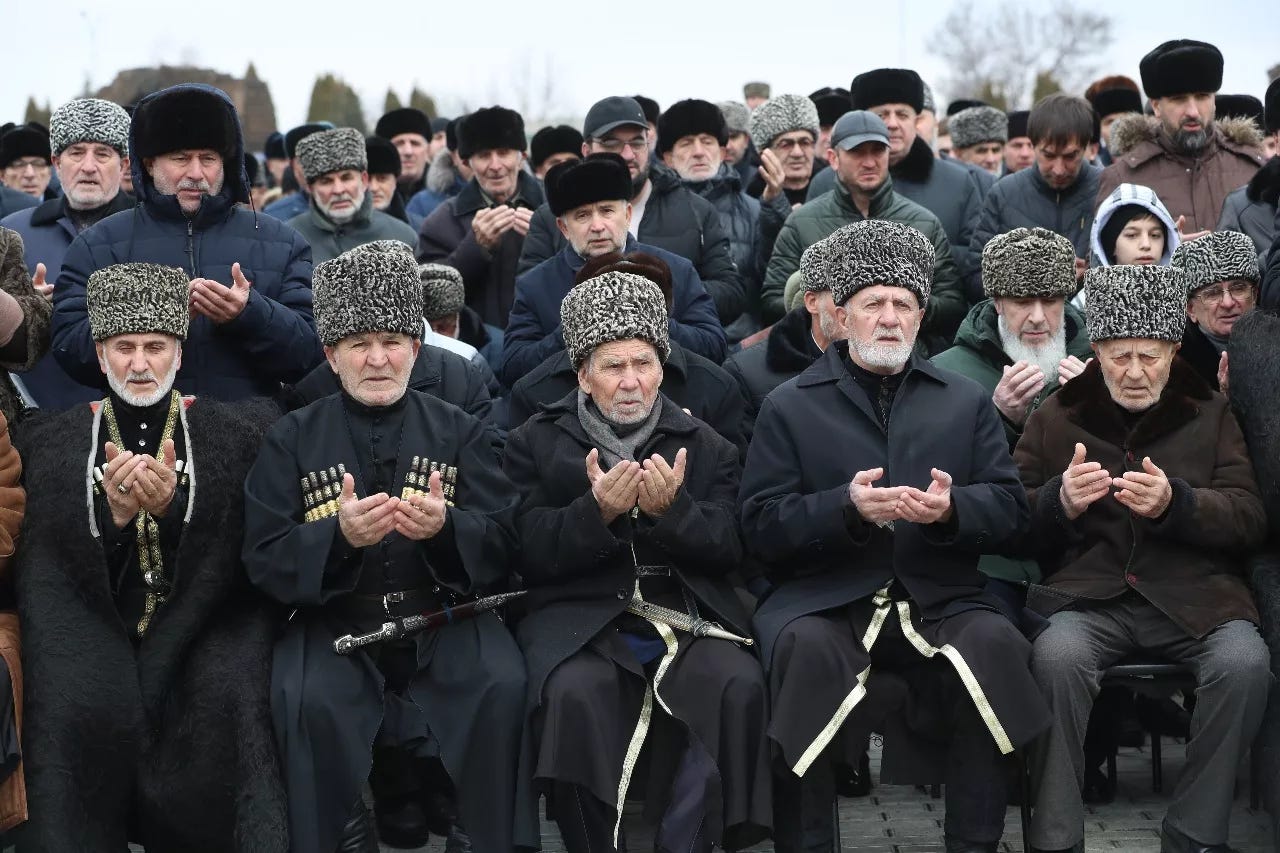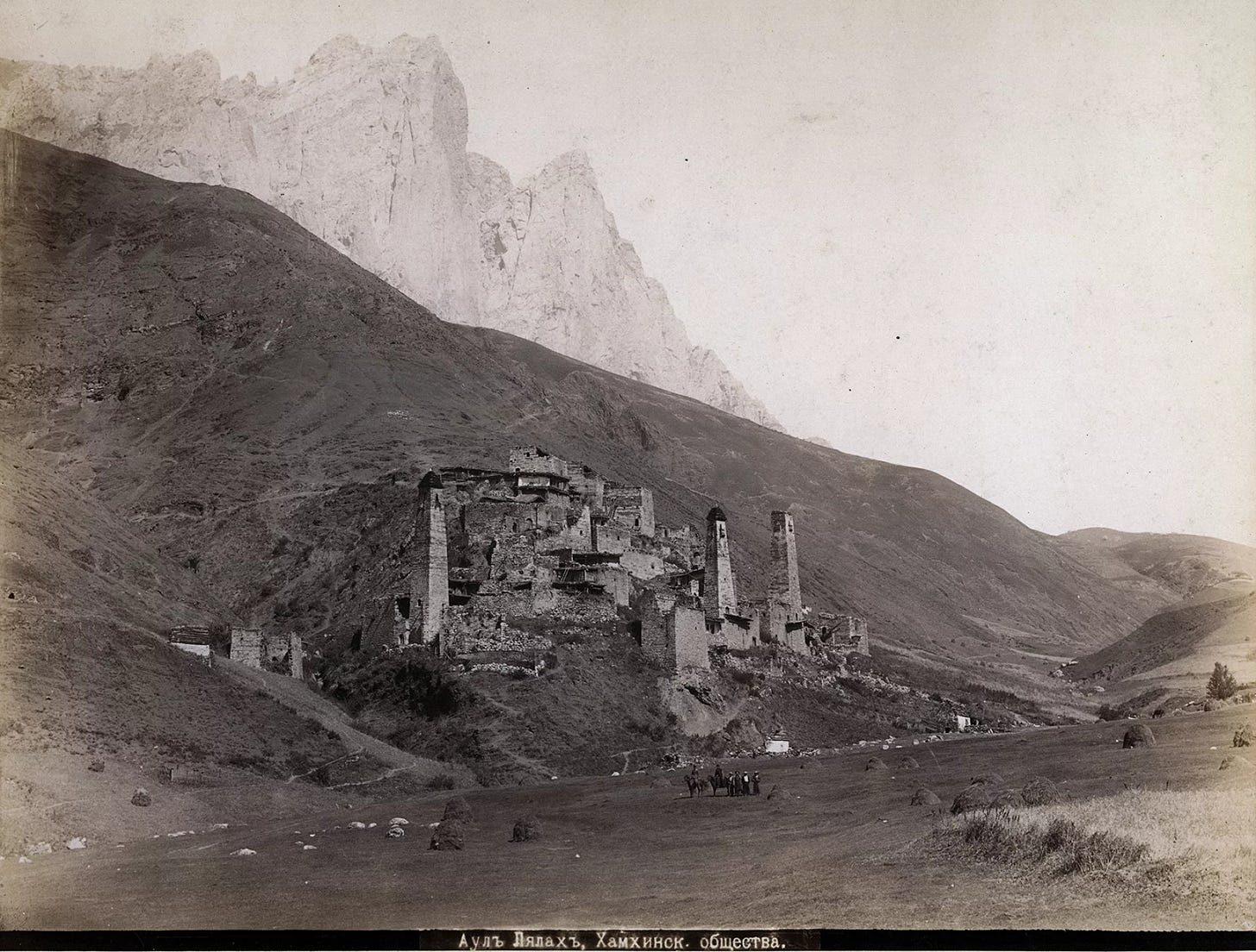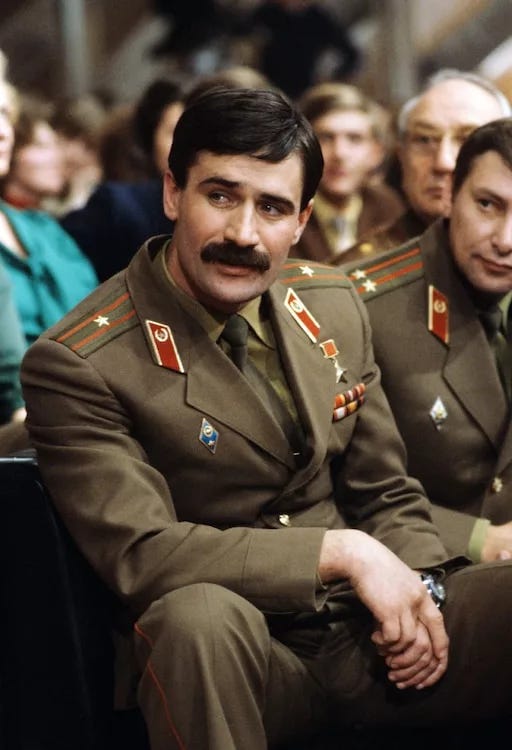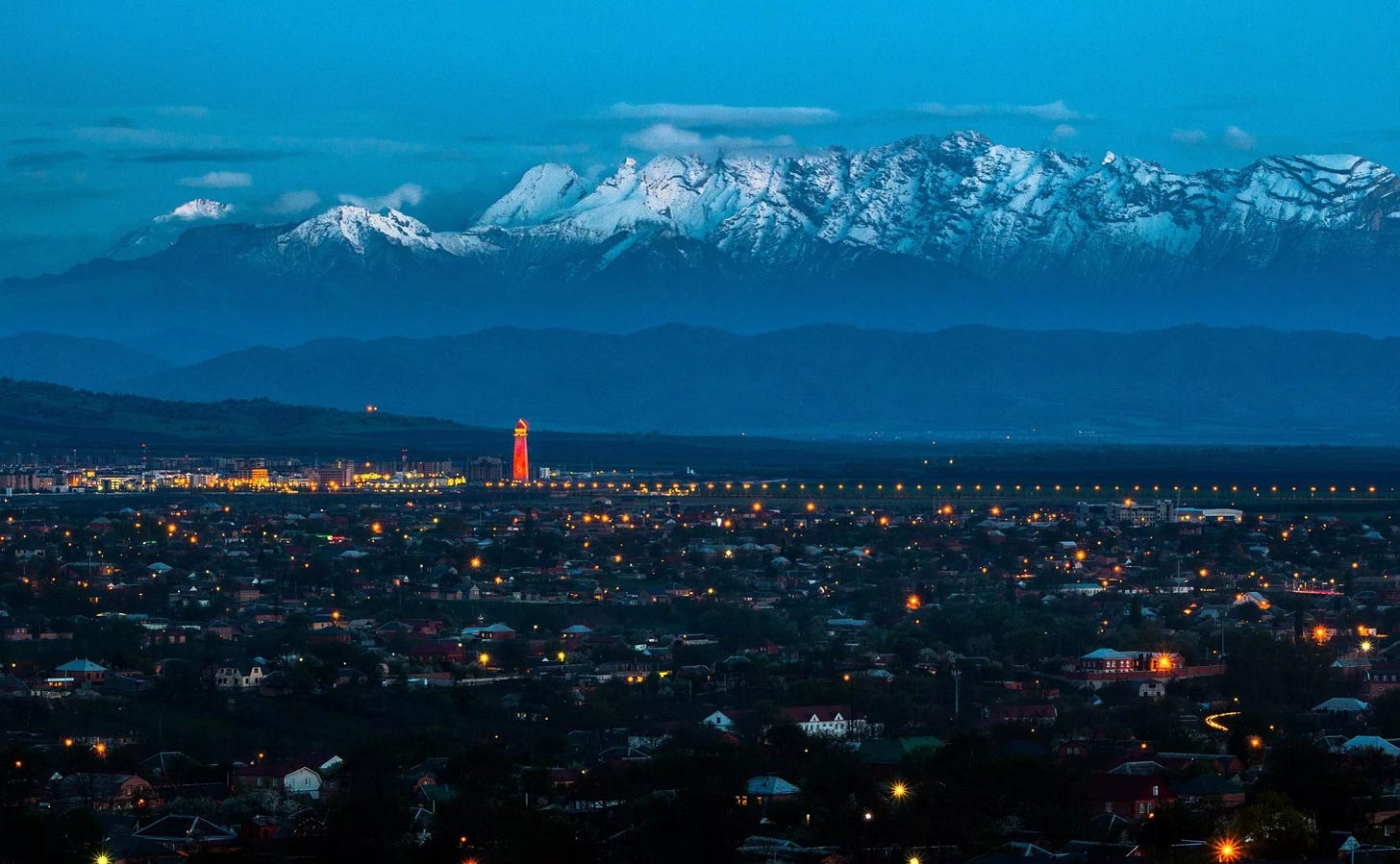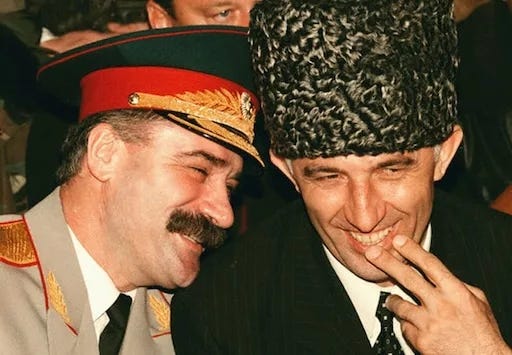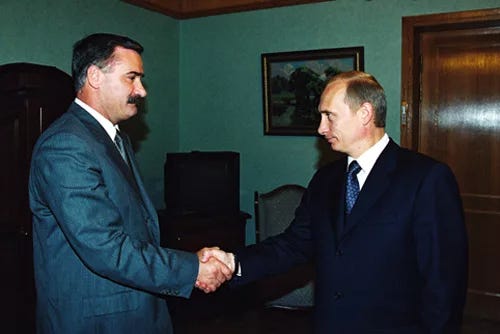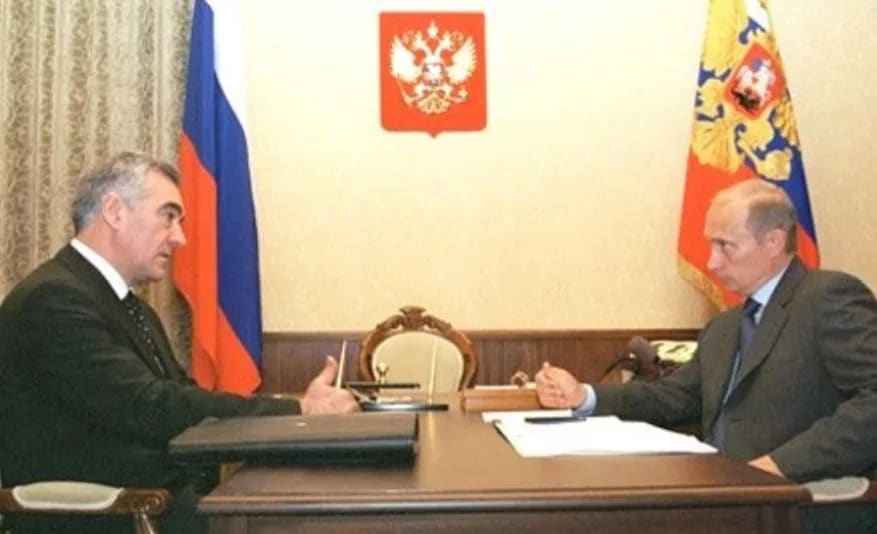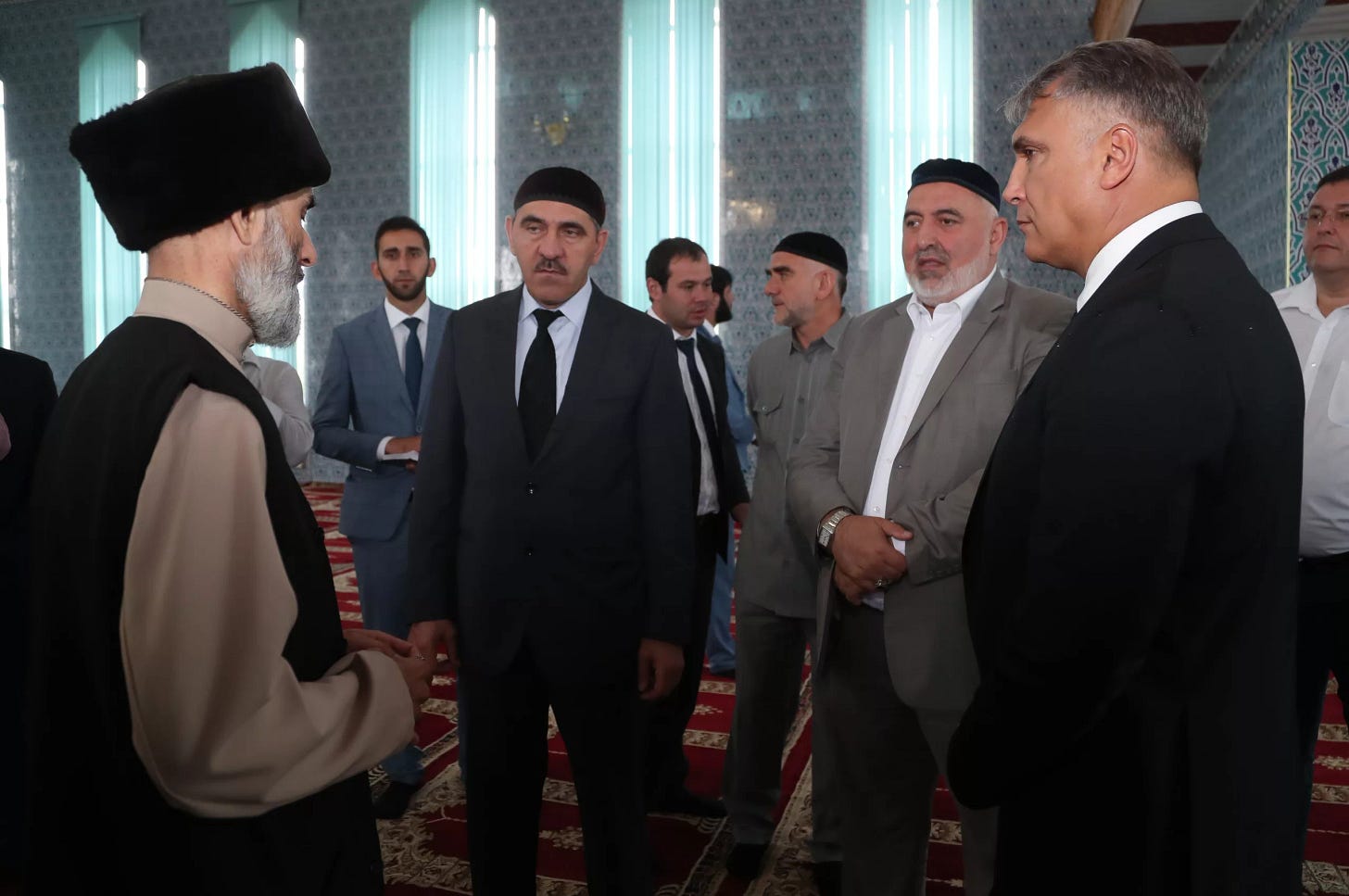Historically, Ingushetia has held a vital geo-strategic position as a bridge linking major trade routes and as a boundary between Asia and Europe. Nestled in the southwestern part of Russia at the foothills of the Greater Caucasus Mountains, Ingushetia is bordered by North Ossetia to the northwest and Chechnya to the east. The Caucasus range defines its southern border with Georgia and the Stavropol region.
Ingushetia and Chechnya were once a single entity. The borders drawn by Russian authorities failed to reflect actual ethnic divisions and have since created complex issues that persist today—even between the Ingush and their Chechen kin.
These borders have hindered Ingushetia from building stable political and economic relations with its neighbors, despite its abundant natural and mineral resources that could transform the lives and future of its people.
This article is part of the series "The Lands of Islam in Russia," which explores the past and present of the Muslim-majority regions—home to around 25 million people—under Russian control.
Ingushetia in Despair
Despite being the smallest republic in the Russian Federation, spanning just about 3,600 square kilometers, Ingushetia is among the most densely populated regions in the North Caucasus and has the highest birth rate in Russia. According to 2024 data, the population stands at 527,200, with Ingush people making up 96% of the total, the rest comprising Russians, Ukrainians, and other nationalities.
Ingushetia’s economy largely depends on agriculture and livestock, along with oil, natural gas, and mineral extraction, and small-scale industries like lumber. The region is also known for its artisanal crafts—pottery, carpet weaving, jewelry, embroidery, and woodcarving. In recent years, tourism has emerged as a growing sector.
Islamic education has seen significant growth, with numerous mosques and institutions being established. Remarkably, Ingushetia has more Islamic higher education institutions than Dagestan, with six Islamic universities.
In rural areas, Sufi brotherhoods known as murid groups—primarily following the Qadiriyya and Naqshbandiyya orders—are especially influential.
Today, Ingushetia grapples with political unrest directly linked to Russian policies. It remains the poorest and most unstable region in the North Caucasus, suffering from the highest unemployment rate in Russia—officially 40%, though local reports suggest it's closer to 50%.
While the North Caucasus may appear under firm Russian control, Ingushetia is one of its most ideologically volatile republics. Influenced by jihadist thought since the First Chechen War, many Ingush fighters have joined conflicts in Syria and Iraq. Researchers argue that Russia’s repressive policies have fueled Salafi movements and rebellion.
The idea of independence from Russia still resonates with large segments of the Ingush population. In late March, Russian forces killed six armed men in Karabulak, branding them Ingush separatists. In 2023, a movement calling itself the "Ingush Independence" group announced the formation of the "Ingush Liberation Army" and called for an end to Russian occupation.
Several Ingush battalions are currently fighting alongside Ukraine, and the Ukrainian parliament has voted to recognize the Ingush people's right to form an independent state.
Roots and Social Structure
The Ingush are one of the oldest mountain peoples of the North Caucasus, tracing their lineage back to pre-Christian times. They share common ancestry with the Chechens. According to Chechen historian Yavuz Akhmadov, the Nakh peoples—the ancestors of today’s Chechens and Ingush—migrated to the mountains in 1262 CE to escape Mongol invasions through the Darial Pass. They remained in the highlands until the 1390s.
Though the Mongols failed to conquer Ingushetia’s mountainous regions, both Chechens and Ingush were devastated in 1395 by Timur (Tamerlane), whose forces slaughtered inhabitants, burned pastures, and destroyed hundreds of villages. This catastrophe fractured Nakh tribes into smaller clans scattered across the mountains, although they would occasionally reunite.
Religiously, the Ingush were originally pagan. Between the 17th and 19th centuries, they converted to Islam. Like the Chechens, most Ingush follow the Shafi'i school of Sunni Islam.
Though Chechen and Ingush are distinct languages, both belong to the same linguistic family and are mutually intelligible—sharing about 40% of vocabulary. Like Chechen, Ingush was originally written in Arabic script before being converted to Cyrillic in 1938 by Russian authorities.
Culturally conservative and clan-based like their Chechen cousins, the Ingush live according to Islamic law and tribal customs. Islam is deeply intertwined with local traditions, and ancient codes of honor and clan loyalty remain vital in the lives of the 350 clans across the republic. Disputes are rarely taken to Russian courts; instead, tribal mechanisms resolve conflicts, functioning like grassroots social institutions.
Tribal elders continue to play significant roles in mediating disputes and officiating at major social and religious ceremonies. Politicians often seek their symbolic endorsement.
Ingushetia is also an open-air museum of sorts—renowned for its mountainous scenery, medieval watchtowers, and fortresses dating back to the second millennium BCE. These towers, built for defense, now symbolize the resilience and enduring spirit of the Ingush people.
Ingush society boasts a rich cultural tapestry of traditions, legends, epics, songs, and proverbs. Music, dance, and oral history are highly valued. Collective memories of historical injustices—shared with the Chechens—shape Ingush identity, particularly in relation to Russian domination, the Caucasus War (1817–1864), Soviet-era oppression, and Stalin’s mass deportations.
Ingushetia Under the Tsars
By the 18th century, Russia had already taken control of the lowlands in Chechnya. Ingush historian Nuruddin Kodzoev recounts how, in 1770, a delegation of nine Ingush elders pledged loyalty to the Russian Empire in the town of Kizlyar. This was followed in 1781 by more clans affirming allegiance to Russia.
Russian historians have long interpreted these events as a voluntary integration. However, Chechen historian Yavuz Akhmadov disputes this, arguing that many of these pledges were coerced and quickly broken. Several Ingush clans continued to resist Russian expansion.
Following the 1774 defeat of the Ottoman Empire, Russia intensified its efforts in the North Caucasus. Imam Mansur declared jihad against the Russians in 1785, sparking a six-year revolt. Though ultimately captured and sentenced to life imprisonment, Mansur’s rebellion galvanized widespread resistance.
Under General Alexei Yermolov—who infamously described the Chechens and Ingush as dangerous and requiring “special tactics”—Russia tightened its grip on Ingushetia. Fortresses and Cossack settlements sprang up, particularly in the town of Nazran.
Though six Ingush clans signed a loyalty agreement in 1810, uprisings followed in 1822 and 1840. Tribes such as the Galashians and Karabulaks joined forces with Imams Mansur and Shamil. A major rebellion erupted in Nazran in 1858, prompting the Russian army to destroy key villages and sever ties between Ingushetia and Shamil’s territories.
From 1859 to 1861, thirteen Cossack settlements were built on Ingush lands—each housing roughly 200 families—isolating the Ingush further and fracturing their connection with the Chechens.
Amid rising dissent, Sheikh Kunta-Haji Kishiev of the Qadiriyya order offered a doctrine of nonviolent resistance. His message urged adaptation to Russian rule while preserving Islamic and cultural identity. He famously declared, “If they force you to wear the cross, wear it—it is but metal. Remain a Muslim in your heart. But if they touch your women or language, fight to the death.”
His teachings gained popularity among war-weary mountain tribes. Though later arrested in 1863, his influence lingered. His followers launched what became known as the “Dagger Uprising,” a desperate but unsuccessful attempt to free their spiritual leader.
The Soviet Yoke
By the late 19th century, Ingush and Chechen clans had begun to reconnect. In 1917, Ozun Khadzhi declared the independent North Caucasus Republic, and the Ingush merged into this fledgling state. Until 1920, no formal administrative borders separated Chechens and Ingush, as territories followed clan-based geographies.
In the 1920s, the USSR established two autonomous regions—one for Chechens and another for Ingush. These borders would shift over time. The Soviets met resistance from the Ingush throughout the 1920s and 1930s, targeting religious leaders and intellectuals while collectivizing agriculture and labeling nationalism as bourgeois ideology. The 1932–34 famine decimated many villages.
In 1944, Stalin dissolved the Chechen-Ingush Republic, accusing both peoples of collaborating with the Nazis. Entire communities were deported to Kazakhstan and Siberia during a brutal winter operation. Many perished en route or shortly after arrival.
Russian and Ossetian settlers took over Ingush lands, and when Khrushchev allowed their return in 1957, Ingush families faced hostility from new occupants. Some had to buy back their ancestral homes. Importantly, the 1957 decree reinstating the republic failed to return territories given to North Ossetia, permanently altering Ingushetia’s borders.
The Rise of the Ingush National Movement
By the 1980s, both Chechens and Ingush were deeply affected by the collective memory of Soviet injustices. From 1988–1990, discussions on historical grievances fueled a growing independence movement. In fall 1988, Ingush leaders convened in Grozny to demand the return of their lands seized during the 1944 deportation.
Following Chechnya’s declaration of independence in November 1990, Ingush representatives requested Moscow’s support for territorial restitution. Boris Yeltsin’s visit to Ingushetia in March 1991—unprecedented for a high-ranking Russian politician—was seen as a strategic move to weaken Chechen unity.
A month later, Russia’s Supreme Council passed a law supporting the Ingush land claim. Buoyed by these developments, the Ingush declared their own republic on September 15, 1991, opting to remain within the Russian Federation.
Ingushetia in the Aushev Era (1992–2001)
At the time of its separation from Chechnya in the early 1990s, Ingushetia had no institutions of higher education, no airport, hotels, sports stadium, railway station, or telecommunication infrastructure. The Ingush intellectual elite were based in Grozny and Vladikavkaz.
Immediately after the republic's formation, Moscow sent Russian officials to help establish governmental institutions. Meanwhile, tensions with the Ossetians escalated. Clashes between Ingush and Ossetians became frequent, culminating in a violent conflict on the night of October 30, 1992.
Hundreds of Ingush fighters rushed to defend their people in the Prigorodny District, while armed Ossetian men arrived from South Ossetia to bolster their side. Both groups wielded heavy weapons: machine guns, grenades, and anti-aircraft guns.
On October 31, a delegation from Moscow flew into North Ossetia. Defying Ingush expectations, Colonel Filatov made a televised statement affirming the Russian government's support for the Ossetians.
He declared, “At 12:45 PM today, the first aircraft carrying paratroopers, equipment, and ammunition arrived in Ossetia. Russia does not forget its loyal Ossetian sons who served faithfully for years.”
The next day, Russian troops arrived en masse, ostensibly to separate the warring sides, but ultimately joined Ossetian and South Ossetian forces. Between 40,000 to 60,000 Ingush civilians were expelled from Prigorodny and parts of Vladikavkaz—almost the entire Ingush population of those areas.
Forced to flee in freezing conditions, they took shelter in Ingushetia and Chechnya. Roughly 3,000 Ingush homes were deliberately destroyed.
This mass displacement remains unresolved. Today, relations between the Ingush and Ossetians remain highly strained. Russian military bases now line the border between the two republics.
These traumatic events, seen by the Ingush as ethnic cleansing endorsed by the Kremlin, deepened their sense of historical grievance. The lack of Chechen support during this crisis fostered disillusionment with their closest neighbors.
On February 28, 1993, Ingushetia elected its first president: Ruslan Aushev, a former Soviet general and the sole candidate. Parliamentary elections followed a year later. Aushev’s administration granted reserved seats in parliament for Chechen and Russian minorities.
The new constitution defined Ingushetia as a presidential republic and set age and language requirements for presidential candidates. Article 11 stated that the recovery of illegally annexed Ingush territories must proceed through political means.
Aushev marginalized nationalist factions and discouraged collective mourning over past tragedies. In 1994, he urged, “Enough lamentation. Yes, we have suffered, but we must look forward and build.” Re-elected in 1995 with 66.5% of the vote, Aushev prioritized economic development—especially the petrochemical and gas sectors—alongside education and infrastructure.
With little federal funding, Aushev proposed establishing a free economic zone. Approved by President Yeltsin and Prime Minister Chernomyrdin, this initiative led to 88 projects between 1995–1997, including factories, publishing houses, universities, a hydropower plant, and vital transport infrastructure.
After losing Grozny to Chechnya and Vladikavkaz to North Ossetia, Aushev initiated the construction of a new capital: Magas, funded through the economic zone. He also boosted religious and educational institutions, legalized polygamy, banned alcohol sales during Ramadan, and made Islamic holidays official.
Despite excluding hardline Islamist groups from governance, Aushev maintained cordial ties with Islamic institutions. Ingushetia accepted thousands of Chechen refugees during both Chechen wars. Aushev condemned Russian bombings of Ingush villages and the civilian airport, traveled to affected areas, and hosted international groups documenting Russian war crimes.
Though sympathetic to Chechen suffering, the Ingush refrained from joining the war—fearing retaliation and recalling their own near-genocide at the hands of Russian and Ossetian forces. Aushev’s leadership was instrumental in preserving this neutrality.
He resigned—under pressure—in December 2001, shortly after Putin rose to power. Most observers believe he was forced out by the Kremlin for resisting harsh policies, especially his refusal to close the border to Chechen refugees.
Zyazikov’s Presidency (2002–2008)
Following Aushev’s resignation, Murat Zyazikov—a former KGB officer and close ally of Vladimir Putin—was installed as president in May 2002 in an election widely regarded as rigged.
His tenure marked a period of stagnation, rampant corruption, and brutality. Zyazikov had no clear political or economic vision for the republic, and his administration quickly became notorious for inefficiency and violent repression.
Under Zyazikov, Ingushetia was transformed into a rear base for Russian military operations in neighboring Chechnya. Security forces, including federal troops and paramilitary units, routinely conducted raids, abductions, and extrajudicial killings, often targeting young men suspected of links to insurgent groups.
Human rights organizations documented numerous cases of disappearances and torture.
By 2007, violence in Ingushetia had escalated dramatically. Armed clashes between militants and security forces became a daily occurrence. Public discontent grew amid soaring unemployment and lawlessness.
Mass protests erupted across the republic. Eventually, mounting pressure forced the Kremlin to act. In October 2008, President Dmitry Medvedev removed Zyazikov and appointed a new leader, Yunus-bek Yevkurov.
Yevkurov’s Presidency (2008–2019)
A former paratrooper and decorated military officer, Yevkurov took office with promises of reform, reconciliation, and restoring public trust. His early years saw relative calm and cautious optimism. He reached out to moderate Salafi communities, legalized some Salafi mosques, and initiated a reintegration program for former militants, encouraging them to return to civilian life.
However, Yevkurov’s outreach to Salafis infuriated the powerful Sufi establishment, led by Mufti Isa Khamkhoev. A prominent and wealthy cleric, Khamkhoev commanded the loyalty of numerous village imams and vigorously opposed any legitimization of Salafism.
Tensions came to a head in June 2015 when Khamkhoev’s supporters attempted to seize a major Salafi mosque in Nasyr-Kort, led by the charismatic imam Hamzat Chumakov. A violent confrontation ensued, including an assassination attempt on Chumakov.
Yevkurov blamed Khamkhoev for fueling religious polarization. Although he briefly considered removing the mufti, he ultimately backed down. The dispute escalated into a broader societal rift. Sufi scholars aligned with the mufti became vocal critics of Yevkurov, and some sought support from Ramzan Kadyrov in neighboring Chechnya—himself a staunch Sufi.
Publicly, the conflict between Yevkurov and Kadyrov revolved around religious policy, but deeper tensions simmered beneath. Kadyrov resented Yevkurov’s softer approach to Salafism, while Yevkurov saw Kadyrov as authoritarian and dangerously expansionist.
This underlying rivalry exploded in 2018 when Yevkurov signed a controversial border agreement ceding over 7% of Ingushetia’s territory to Chechnya. The decision outraged Ingush society. The ceded lands held immense symbolic and historical value. Massive protests erupted in the fall of 2018 and continued through March 2019.
The 2018–2019 Uprising
Tens of thousands of protesters—elders, youth, and women—filled the streets of Ingushetia. They organized sit-ins, held open-air prayers, and camped in protest squares. Following traditional Ingush custom, community elders led the demonstrations, with young men protecting them and women participating from designated sections. Despite limited internet access and government crackdowns, the movement sustained itself for months.
The Kremlin-backed Constitutional Court sided with Chechnya, and federal authorities deployed security forces to suppress the protests. On March 27, 2019, during dawn prayers, Russian troops violently dispersed demonstrators. Some Ingush police officers formed a human shield to protect the crowd but were overwhelmed. Dozens were arrested, including tribal elders and prominent activists. Curfews were imposed across several villages.
The crackdown marked the end of the uprising. Though ultimately crushed, it was one of the longest and most determined acts of public resistance in Putin-era Russia. In its aftermath, Yevkurov resigned in June 2019. He was succeeded by Mahmud-Ali Kalimatov, while Konstantin Surikov, an ethnic Russian, was appointed prime minister.
The resignation of Yunus-bek Yevkurov in 2019 marked a turning point, but not the end of Ingushetia’s political crisis. His successor, Mahmud-Ali Kalimatov, took office under the shadow of the recent protests and was viewed by many as a Kremlin loyalist rather than a representative of Ingush interests.
Kalimatov's administration has been marked by increased centralization and the erosion of local autonomy. His appointment of Konstantin Surikov, a Russian technocrat, as prime minister symbolized Moscow's firm grip over the republic.
Tribal leaders and civil society figures have since complained that the Kremlin’s appointees lack cultural understanding and fail to engage with traditional power structures that are crucial to governance in Ingushetia.
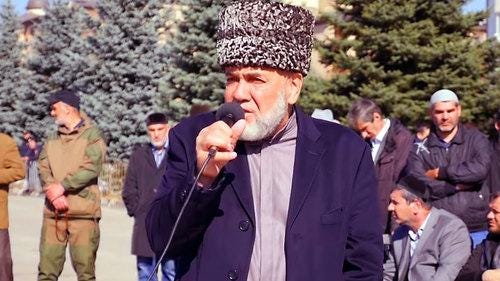
Amid growing disillusionment, Ingush elders and clan leaders publicly voiced opposition to constitutional amendments introduced by the Kremlin that would further concentrate power in Moscow. These amendments were seen as undermining the delicate balance between the Russian center and regional identity, triggering renewed calls for the protection of local traditions and self-rule.
The aftermath of the 2018–2019 uprising continues to reverberate. Many of its leaders remain imprisoned or under surveillance. Ingushetia has witnessed a sharp rise in surveillance, arrests, and military presence, with checkpoints and barracks becoming a permanent fixture across the republic.
Despite heavy repression, anti-Moscow sentiment persists. While overt rebellion has been suppressed, underground networks and encrypted communications among activists continue to thrive. The idea of Ingush independence, once confined to the margins, has entered mainstream discourse among a new generation that sees little future under Russian rule.
Meanwhile, the Ingush diaspora has become more active—particularly in Europe and Turkey—organizing conferences, lobbying international institutions, and pushing for recognition of Ingushetia’s right to self-determination. In tandem, Ukrainian officials and nationalist groups have offered rhetorical and sometimes logistical support to Ingush volunteers fighting alongside Ukrainian forces against Russia.
At home, Ingushetia remains beset by economic hardship. Youth unemployment exceeds 50%, and entire communities are dependent on federal subsidies. Corruption is endemic, and state institutions are widely viewed as illegitimate. The promise of economic revitalization has failed to materialize, and even the modest gains of the Aushev era have eroded.
Despite this bleak outlook, Ingushetia’s cultural resilience endures. Traditional clan structures, Islamic scholarship, and a fierce sense of identity continue to anchor the republic. While the Kremlin has attempted to dilute regional loyalties through administrative fiat, the mountain ethos of resistance and pride remains deeply ingrained in the Ingush psyche.
Ingushetia today stands at a crossroads. What happens next—further suppression or eventual renewal—will depend not only on Moscow’s policies but on the resolve of a people who have endured centuries of conquest, exile, and defiance.




